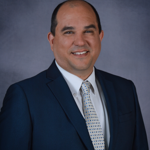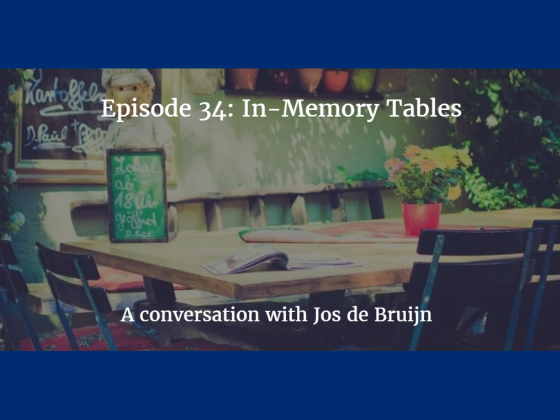In-Memory OLTP
Hello, Compañeros! You’ve heard of Hekaton and in-memory OLTP before, but what does in memory really mean for your database? Perhaps you have questions like I did, like how does in memory OLTP differ from disk-based tables? What data types aren’t allowed in in-memory tables? Is in-memory only an “on premises” feature or does Hekaton work in Azure too? Is there a minimum amount of memory required for in-memory tables? In Episode 34 of the SQL Data Partners Podcast, I’m going to talk about in-memory OLTP and in-memory tables with Jos De Bruijn. Jos is a Program Manager at Microsoft for SQL Server In-memory OLTP. I chat with Jos about how in-memory tables work and why they’re just as durable as traditional disk-bound tables. He lays out the whole process. Jos also answers common DBA concerns about them and discusses how to make them efficient and reveals the SQL Server 2016 features that affect in-memory OLTP. After that, we explore Jos’ favorite business tools and listen as he talks about what he’d do with a million dollars, what his favorite superhero power would be, and what advice he’d give to anyone in the SQL Family.
- Microsoft OneNote
- Jos de Bruijn on Twitter
- In-Memory OLTP – what’s new in SQL2016 CTP3
- Speeding up Transactions with In-Memory OLTP in SQL Server 2016 and Azure SQL Database
- Hekaton in 1000 words by Kalen Delaney
- Memory-optimized table variables
- 2013 Microsoft PDF on Hekaton
- Redgate’s Free Book on In-Memory OLTP
- #SQLFamily on Twitter
Listen to Learn
- How in-memory tables differ from disk-bound tables
- How in-memory OLTP works with transaction locks
- Database recovery with in-memory tables
- New changes in SQL Server 2016 for log types, foreign keys, unique constraints, subqueries… and more
- The differences between SQL Server 2014 and 2016…and why you want to look at 2016
- The “shock absorber” scenario and why in-memory tables work well
- Jos de Bruijn’s favorite tools in his role as a Program Manager at Microsoft
Our Guest

Jos de Bruijn
Jos de Bruijn is a Senior Program Manager in the Database Systems team. He works on the SQL Server Database Engine and the Azure SQL Database service, focusing on query processing and data storage. Jos has led the query and transaction processing for In-Memory OLTP in SQL Server 2014, and delivered In-Memory OLTP enhancements in SQL Server 2016/2017 and Azure SQL Database. His current focus is performance and scalability in Azure SQL Database. In a previous life, he obtained a Ph.D. in knowledge representation and semantic web technology, and worked in academia for several years as an assistant professor.
Meet the Hosts

Carlos Chacon
With more than 10 years of working with SQL Server, Carlos helps businesses ensure their SQL Server environments meet their users’ expectations. He can provide insights on performance, migrations, and disaster recovery. He is also active in the SQL Server community and regularly speaks at user group meetings and conferences. He helps support the free database monitoring tool found at databasehealth.com and provides training through SQL Trail events.

Eugene Meidinger
Eugene works as an independent BI consultant and Pluralsight author, specializing in Power BI and the Azure Data Platform. He has been working with data for over 8 years and speaks regularly at user groups and conferences. He also helps run the GroupBy online conference.

Kevin Feasel
Kevin is a Microsoft Data Platform MVP and proprietor of Catallaxy Services, LLC, where he specializes in T-SQL development, machine learning, and pulling rabbits out of hats on demand. He is the lead contributor to Curated SQL, president of the Triangle Area SQL Server Users Group, and author of the books PolyBase Revealed (Apress, 2020) and Finding Ghosts in Your Data: Anomaly Detection Techniques with Examples in Python (Apress, 2022). A resident of Durham, North Carolina, he can be found cycling the trails along the triangle whenever the weather's nice enough.
Want to Submit Some Feedback?
Did we miss something or not quite get it right? Want to be a guest or suggest a guest/topic for the podcast?
